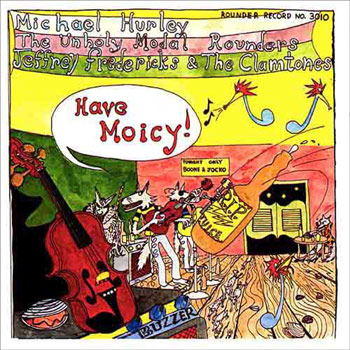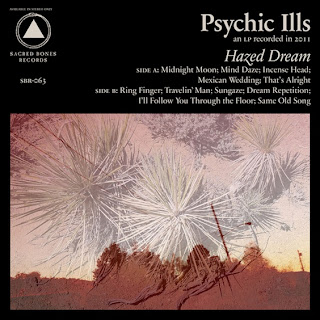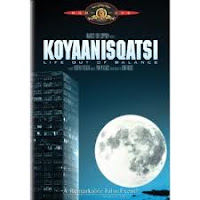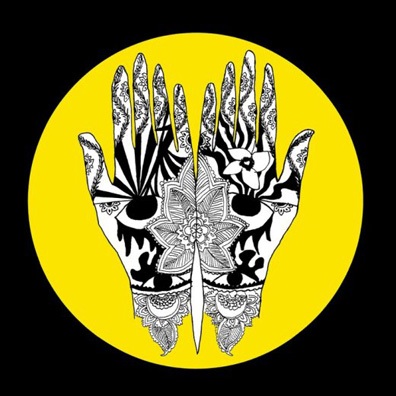What a daunting task: 76 artists covering Bob Dylan to benefit Amnesty International. I went into it kind of expecting the worst. I’m relieved and surprised to report that this 4CD set is, for the most part, a heartfelt musical experience. When scanning the list of artists, it is easy to skip over the fact that many of them are exactly who you would want to see covering Bob, and instead to focus on the fact that Miley Cyrus and Sugarland are there. Don’t worry about that. Focus on the fact that many artists give the best they’ve got and take the task quite seriously. I actually found the whole thing to be quite enjoyable and further proof that Dylan is the greatest writer of his generation. One is flabbergasted by the breadth of subject matter and the elasticity of this work that allows it to be stretched in so many directions and yet still appear to us as cohesive, meaningful, poignant and anthemic. Let me run down a few of the more interesting highlights to my ears.
Disc 1
- Punk poetess Patti Smith giddyaps her way through “Drifter’s Escape” with the perfect mix of bravado and fear.
- Tom Morello offers up a somber take on the rare “Blind Willie Mctell.”
- Longtime Dylan acolyte Pete Townshend plays a lovely, lilting “Corrina Corrina.”
- Goofball Brett Dennen is his goofiest and sweetest on “You Ain’t Goin’ Nowhere.”
- Mariachi El Bronx re-imagine the haunting “Love Sick” into a woozy bullfight march.
- Silversun Pickups shimmer on “Not Dark Yet” giving it their own spin. It’s a glacial, icy delivery.
- My Morning Jacket make “You’re A Big Girl Now “ sound like it was produced by Daniel Lanois with reverbed steel guitars keening and Jim James doing his best Dylan imitation.
- Mark Knopfler hits the perfect note on “Restless Farewell” sounding much older and wiser.

Disc 2
- Queens of The Stone Age give a lo-fi punky sneer to “Outlaw Blues.”
- Steve Earle and Lucia Micarelli own “One More Cup of Coffee (Valley Below).” They slow it down and set the perfect cinematic mood of dread.
- Jackson Browne plays a completely reverent “Love Minus Zero/No Limit” soaked with organ and warmth.
- Angelique Kidjo reworks “Lay Lady Lay” into an upbeat African fantasy.
- Joan Baez lives up to her reputation with a spot-on reading of the powerful “Seven Curses.”
Disc 3
- Rapper K’Naan takes some liberties on “With God On Our Side, adding his own raps. But it works surprisingly well.
- Neil Finn with Pajama Club have a rootsy, swinging take on “She Belongs To Me.”
- Zee Avi, a 23-year old singer from Borneo has a unique and captivating take on the beautiful “Tomorrow Is A Long Time.”
- Underdog supergroup, Fistful of Mercy (Ben Harper, Joseph Arthur and Dhanni Harrison), break “Buckets of Rain” down to its essence with interesting results.
- Bad Religion kick “It’s All Over Now Baby Blue” in the ass and give it a punk makeover that still holds on to the melody and majesty of the song.
- Cage The Elephant take “The Lonesome Death of Hattie Carroll” to a dark and weird place that I thought really worked.
Disc 4
- Carolina Chocolate Drops are a natural pairing for “Political World” and they take it to the past perfectly.
- Taj Mahal has such a ball with “Bob Dylan’s 115th Dream” you can’t help but smile as he growls and grooves his way through it.
- Thea Gilmore’s gorgeous interpretation of “I’ll Remember You” brought a whole new light to the song. In a woman’s hands it turns from bitter regret to wistful longing.
- Lucinda Williams brings just the right note of resignation to “Trying To Get To Heaven.”
- One can’t help but be moved by Pete Seeger with Rivertown Kids children’s choir doing a touching, singalong version of “Forever Young.”
- Of course Bob lays any doubt to rest as to whom does it best with a classic version of the title song.
There are obviously some stinkers in the bunch (Ke$ha takes the cake and Miley Cyrus namedropping Verlaine and Rimbaud on her version of “You’re Gonna Make Me Lonesome When You Go” is a rich one indeed. You gotta hear it to believe it.), and some that just don’t bring much to the party, but there are lots of sincere attempts to pay tribute and to put their own stamp on great songs. The overall effect is a moving tribute to a great cause and the greatest songwriter.
More than any Doors album my understanding of L.A.Woman has grown and changed over the decades. The first three albums remain gems of the era, the perfect 60’s synthesis of pop, poetry and druggy gestalt to make them timeless, but uniquely of their time. The next two albums saw the band struggling to define a new sound, which on Morrison Hotel begins to take a rootsier, blues direction. With what was to be their final album, the band fully reinvents itself as a whiskey-soaked, Hollywood R&B and in the process cut one of the defining albums of the era. The 60’s are disappearing in the rear-view, Jim Morrison is putting on weight and losing his interest in being a pop idol (truth be told, he never really was that interested in it). He and Robby Krieger have both written new songs tilting toward the darkness that looms on the horizon. Sleaze, commercialism and a total abandonment of the ideals that created the 60’s are gone and in their place is a heap of white powder on a shiny surface. It has a very bitter aftertaste. All of this and more plays out on the grooves of L.A. Woman, the album that invented the 70’s.
 Both of the new releases hold revelations. The two-disc reissue of the album proper contains an alternative version of every song on the album and then a newly discovered song, “She Smells So Nice” which kind of tumbles into a version of “Rock Me.” Don’t get your hopes up on the unreleased song - it is a trifle with almost no serious historical value. The alternate versions however, are very interesting. They are really different, although rarely better, than the familiar versions but they do give a fascinating glimpse into the creative process of this great band. It’s the little things; like Morrison singing, “Do you love her madly” instead of “Don’t you love her madly.” Doesn’t seem like a big deal right? Listen to it! It’s amazing what a difference one syllable can make in the creation of a classic. The versions are all significantly different than the familiar album takes and a great addition to the collection.
Both of the new releases hold revelations. The two-disc reissue of the album proper contains an alternative version of every song on the album and then a newly discovered song, “She Smells So Nice” which kind of tumbles into a version of “Rock Me.” Don’t get your hopes up on the unreleased song - it is a trifle with almost no serious historical value. The alternate versions however, are very interesting. They are really different, although rarely better, than the familiar versions but they do give a fascinating glimpse into the creative process of this great band. It’s the little things; like Morrison singing, “Do you love her madly” instead of “Don’t you love her madly.” Doesn’t seem like a big deal right? Listen to it! It’s amazing what a difference one syllable can make in the creation of a classic. The versions are all significantly different than the familiar album takes and a great addition to the collection.
Even more valuable was the new video called Mr. Mojo Risin’: The Story Of L.A. Woman. Combining some newly surfaced footage of the band in the studio recording the album, with lots of other footage of the band’s history and interviews with the three surviving Doors as well as producers, engineers, friends, fans, hangers-on and record label people, this film is one of the best behind-the-scenes looks at a classic album I’ve ever seen. The film contextualizes the album within the historical period and the arc of The Doors’ career for an unequaled understanding of a classic album and its impact on the listening public. It is always fascinating to watch an engineer sit at the board and take away everything but the guitar or vocal. It gives such a valuable insight into what actually goes into the process of making an album. It is easy to take a song like “Riders On The Storm” for granted. We’ve heard it so much it has become almost commonplace. Mr. Mojo Risin’ reminded me exactly how new and exciting this song and album sounded when it first came out. Over the years it has become fashionable to bash Jim Morrison and diminish the amazing contribution of The Doors. This film will go some length to putting the lie to that notion.






























